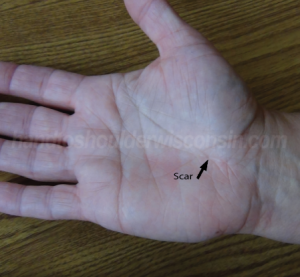The team of orthopedic doctors and therapists at Hand to Shoulder Center are here to diagnose and treat hand, finger, wrist, elbow, forearm, and shoulder numbness and tingling. Contact Hand to Shoulder Center of Wisconsin in Appleton or Green Bay, WI today to learn more about how our orthopedic specialists can help you.
Numbness and Tingling
“Numbness” is classified as the reduction or absence of feeling. It is a bothersome symptom but rarely painful. A tingling sensation is a funny feeling that is often referred to as “pins and needles.” It is often not painful but rather annoying and uncomfortable. When hand numbness and/or tingling symptoms occur, it is often caused by an entrapment of the nerves and/or blood vessels, often producing a clumsy or weak feeling in the upper extremity.
Subject to the area of compression, nerve entrapment symptoms can include complaints of numbness, tingling and/or pain in the hand, wrist, or fingers. Weakness and tenderness in the hand and/or elbow may also occur. In severe cases, weakness in gripping and difficulty in finger coordination may develop.
Your skin is filled with many tiny nerve endings that send messages about sensation to the brain. When these sensations are altered by a compressed nerve, inflammation or reduced blood flow, the skin may feel a prickling or tingling sensation. This is often a pre-warning of worse things to come, such as muscle-loss to the hands and arm that can sometimes occur. Often these symptoms are overlooked until the annoyance becomes a nuisance in your everyday activities or sleep habits.
Numbness in hands can be caused by a number of different diagnoses. At Hand to Shoulder Center of Wisconsin, our sub-specialty trained physicians treat all conditions of the upper extremity caused by a nerve entrapment and/or blood vessel condition. Our physicians evaluate and explore prior hand, wrist, and arm injuries and all medical conditions to assist in determining the cause of your numb hands and/or tingling in fingers. Additional testing such as a nerve conduction study (EMG) along with x-rays may be ordered. Although many diagnoses are possible, carpal tunnel syndrome tends to be one of the more popular diagnoses of tingling in hands. A number of other conditions seen at Hand to Shoulder Center of Wisconsin that serve as the differential diagnosis for numbness in fingertips and hand tingling includes:
- Brachial plexus injury – the brachial plexus is the network of nerves that sends sensations from the spine to the shoulder to the hand.
- Thoracic outlet syndrome – nerves from the brachial plexus passes through the thoracic outlet, which is composed of 3 passageways between the neck and shoulder. These spaces become smaller due to poor posture, poor body alignment or tight musculature of the neck, causing the nerves and blood vessels to become compressed.
- Ganglion cyst – a fluid-filled mass that lies beneath the skin that may cause compression to the nerves and/or blood flow.
- Peripheral neuropathy – this often occurs with systemic disorders such as diabetes. Peripheral neuropathy most often causes numbness or tingling in the hands and feet, but is managed medically.
- Raynaud’s disease – a condition that affects the hands causing numbness and coolness in response to cold temperatures or stress.
- Ulnar nerve compression – a condition that occurs when the ulnar nerve is compressed, pinched or irritated; when this occurs on the inside of the elbow, it is referred to as “cubital tunnel syndrome”; when it occurs in the wrist, it’s called “Guyon’s canal” or “ulnar tunnel”.
- Vasculitis – an inflammation of your blood vessels.
- Bone spurs – calcium deposits form on bone matter that may rub against other bones or nearby soft tissues possibly causing compression to the nerves and/or blood flow.
- Previous or present fracture conditions that may be causing an acute compression on a nerve or blood vessel.
Treatment
Subject to the diagnosis and the level of the symptoms, non-surgical recommendations for mild symptoms may include modification of daily activities, bracing and splinting/orthotic management. Physical and occupation therapy is often ordered to address the patient’s mechanics, soft tissue status and neural mobility. If swelling is present, hands-on manual therapy can assist with the circulation of fluids to decrease swelling to provide relief for nerves and other structures being compressed. Tendon gliding may also be used to decrease compression and enhance blood flow along with exercising postural management and education on compression syndromes may be addressed. Strengthening and stretching, which is included as part of occupational or physical therapy program will help to assist in restoring proper function.
If conservative actions fail, a surgical procedure may be recommended (Fig. 1-2). Surgeries are performed at Woodland Surgery Center or one of the three Fox Valley hospital locations.
 Figure 1: Ten days post carpal tunnel surgery |
 Figure 2: Two years post carpal tunnel surgery |